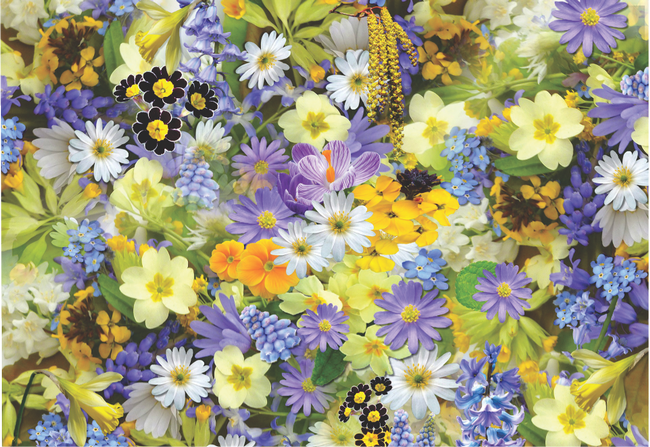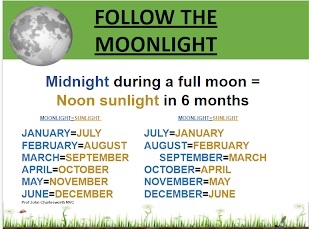by Melody Kendall
Spring is in the air and my enthusiasm for gardening has increased more than ever. To get ready for spring planting, now is the time to prepare my garden. As I walk my landscape, I consider what I need to do to get ready for the ‘big push' after April 15th which is the last frost date in our area. I take mental notes of things to be done.

Getting my soil ready now is key. The time I spend now prepping and amending means that I'll be able to plant immediately once the threat of frost has passed. New information on soil health and climate change suggests tilling your soil isn't the recommended way to go anymore. This information says that the act of tilling breaks down the soil's existing microorganisms and compacts the soil as the blades hit the bottom of the tilled swath. Now is also the time to add amendments, such as compost and steer or chicken manures. Adding them now will allow them to mellow and break down, so that the soil is ready for my transplants in April.
If I want to reuse any pots and containers I must remember to clean and sanitize them first with one-part bleach to nine parts water. After I submerge each in this solution and allow them to soak for at least 10 minutes I'll set them aside to dry. This will sterilize them, removing any insects or diseases from the previous plant in the pot.
Weeds aren't really a problem for me but only because I have been compulsively removing and controlling them a couple times a week. I know that I need to get rid of them before they set seed. If they get a chance to distribute their payloads the resulting seeds will come back to haunt me next year. As the summer progresses the weed population will diminish in the unwatered areas. In irrigated locations I will still have to remain ever vigilant to keep those pesky weeds at bay.
As I scope out the garden, I think about additions I want and where I can place them to give them the best chance to grow and thrive. I look at all available containers, empty planting beds and areas that need refurbishing. Understanding my available space, available water, sunlight coverage and the condition of these various areas will help to cut down on any future problems and expenses.

After I've determined the sunlight/shade ratio, I will need to decide where the water is going to come from. Is there an existing irrigation system or will I need to get that assembled? If hand watering is the method the plants will be watered, where is the nearest hose bib? I'll have to plan my work load accordingly.
Now is the time to decide on any plant additions. I'll take into consideration the mature size of those plants so I'll only purchase the varieties and amounts that I need for my space. Everyone has a wish list of plants that they would like to have. I'll need to research the hoped-for additions and decide which ones will grow best in my landscape. Or, which ones that will, if I take them on, require more effort to maintain, my mantra being “right plant, right place.”
I'm not big on planting vegetables. But I do like flowers, lots of flowers. Do I want to devote the time to starting any flower seeds indoors or will I plant the seeds directly in the garden beds? Maybe I'll just purchase transplants to go right in the ground.
If you were thinking of planting spring veggies in your garden you might first consider what kinds you and your family will actually eat. If string beans are not a big favorite, then planting a huge area full of them is probably not a good use of your available space, time, and money. However, if zucchini, a big producer, is something your family enjoys, then two mounds might be the way to go.
In thinking of all the planting holes I will need to dig, compost piles to turn, plant containers to move, and all the weeds I will be pulling I am ramping up my exercise schedule. I'll be taking walks around my neighborhood to get my cardio up and also give me a look at what everyone else is doing in their landscapes this spring. And, as much as I hate them, I will be doing some general loosening up exercises as well. I want to be sure to be able to putter in my garden without any muscle pain and the accompanying search for the ibuprofen bottle. Plus, it's good for my overall health anyway.
My notes are ready, my research done and my plans are drawn. Guess I'll take a loop around the neighborhood and let it all sink in.
Napa Master Gardeners are available to answer garden questions by email: mastergardeners@countyofnapa.org. or phone at 707-253-4143. Volunteers will get back to you after they research answers to your questions.
Visit our website: napamg.ucanr.edu to find answers to all of your horticultural questions.
Photo credits: Pixabay Image by Shirley Hirst
Chart by Mel Kendall
Information links:
Regeneration International.org-no till https://regenerationinternational.org/2018/06/24/no-till-farming/
UC The California Garden Web https://ucanr.edu/sites/gardenweb/Vegetables/
UCMG Napa County- Right plant, right place https://ucanr.edu/sites/ucmgnapa/files/153367.pdf
UCMG Sonoma County-Right plant right place
https://sonomamg.ucanr.edu/Sustainable_Home_Gardening/Right_Plant_Right_Place/
UCMG Stanislaus County https://ucanr.edu/blogs/blogcore/postdetail.cfm?postnum=45572
UCMG Placer County https://ucanr.edu/sites/ucmgplacer/files/171551.pdf
https://ucanr.edu/sites/ucmgplacer/files/171552.pdf
UC IPM weed management http://ipm.ucanr.edu/PMG/r540700111.html

